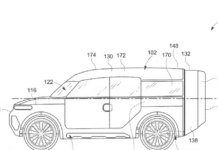 In Confessions of a Service Advisor – Part Three, the importance of the most common (and often misunderstood) age and mileage-based vehicle repairs and up-sell services will be discussed.
In Confessions of a Service Advisor – Part Three, the importance of the most common (and often misunderstood) age and mileage-based vehicle repairs and up-sell services will be discussed.
Remember, these are solely opinions based upon my own experiences working at mostly high-end European import dealerships. In other words, if you own a BMW, Audi, or Porsche, it’s definitely worth reading carefully. Wink-wink, nudge-nudge.
Urgency ratings are on a scale of 1-10, with 1 being “ignore it,” and 10 being “do it schnell.”
 Misunderstood Mechanical Repairs
Misunderstood Mechanical Repairs
Valve Cover Gaskets: Like clockwork, valve cover gaskets typically begin to seep engine oil right after your warranty expires at four years or 50,000 miles. It’s not crucial until the oil begins dripping down to your hot exhaust manifold, which creates a fire hazard, which you definitely don’t want. Urgency: 6
Rear Main Seal: This is a big, round rubber seal between your car’s engine and transmission. The seal fits around the rear of your engine’s crankshaft (what the pistons connect to) where it meets the transmission. Not crucial, but try to get it done in conjunction with a clutch, torque converter, or other transmission repair to save on labor costs. Urgency: 3
Valley Pan Cover Gasket: Found only on V-shaped engines (V-6, V-8, V-12), the valley pan resides under the engine’s intake manifold and covers the top of the cylinder block. There are coolant passages that go through the intake manifold to both cylinder heads, and they depend on the valley pan to stay sealed and keep coolant out of the wrong parts of the engine. This repair is often overlooked, as it rarely causes a large-scale coolant leak. If not replaced, this internal coolant leak can cause major damage. Urgency: 8
Coolant Expansion Tank: This is the reservoir under your hood which holds excess coolant, and acts as a fill point for the vital fluid. The tank is consistently under pressure from expansion, contraction, and varying temperatures within the engine’s cooling system. Eventually, the pressure will find a weak point, and crack the tank. Once the tank is cracked, the system loses pressure, and most of your engine’s coolant will leak out. If replacement is necessary, ensure that the unit comes with a new cap and bleeder screw. The seals can fail on those, as well. Urgency: 10
Transmission Leaks: These include input/output shaft seals, shift shaft seals, transmission pan gasket, and any other transmission sealing part. This type of leak is particularly crucial in European vehicles, since many of them do not have a transmission fluid dipstick. Plus, transmission fluid in most of these cars can only be filled upwards from underneath the car using a gravity-feed machine. Low or no transmission fluid leads to imminent mechanical failure. Urgency: 9
Guibo/Giubo/Driveshaft Flex Disc: The flexible coupling used to transmit rotational torque between the drive shaft and the flange on the engine. Its job is to primarily reduce driveline vibration. The part is made of rubber, and dries out/cracks over time. While not crucial to replace, it can create unpleasant driveline vibrations and cause excess wear on your driveshaft and other connected components. Urgency: 3
CV Joint Boots/Axle Boots: CV boots, or “Constant Velocity” joint boots, are what protect and lubricate the critical flex and rotation points in your front axle. Regular axle boots cover and lubricate connection points for your rear axle. When these tear or split, they leak critical axle grease, and leave the spinning/flexing parts of the axle susceptible to damage from road debris and foreign objects. With no lubrication and an influx of dirt, the axles can seize, and sometimes lock. Urgency: 9
Control Arm Bushings/Ball Joints: Control arm bushings are essentially rubber dampers in your car’s front suspension which dampen impacts and vibrations from road irregularities. As innocent as they sound, when they wear out, they can affect your car’s alignment and tire wear, often causing a “clunk” when going over bumps. Ball joints are the critical link between your car’s steering knuckles and control arms. They allow the suspension to move and the wheels to steer at the same time. Excessive wear can also affect alignment, tire wear, and ride quality/noise. Not entirely critical, but should be done ASAP to promote good tire wear and proper control. Urgency: 6
 Preventive Maintenance Up-sells
Preventive Maintenance Up-sells
Underhood Fluids: For oil changes, access your car’s manufacturer-recommended maintenance schedule, as each vehicle is infinitely different. It’s acceptable for intervals to go as long as one calendar year or 15,000 miles, as long as the proper oil and OE filter are used. For brake fluid, change every two years, regardless of mileage. Moisture accumulates in the system, and needs to be removed to prevent corrosion and damage to calipers, lines, and the master cylinder. For engine coolant, I recommend changing every seven years or 100,000 miles, regardless of manufacturer recommendation. No coolant lasts indefinitely, and the protection level drops substantially over time. For power steering fluid, change every seven years or 100,000 miles along with coolant.
Undercar Fluids: With reference to transmission, front differential (if applicable), rear differential (if applicable), and transfer case (if applicable) fluids, consult your vehicle’s manufacturer-recommended maintenance schedule. The differentials and transfer case do not contain much fluid, so replace at least every 60,000 miles. The transmission fluid should be changed at least every 100,000 miles.
Fuel Injection Flush: This not only helps improve fuel economy, starting, and running/idle quality, but also reduces strain on your fuel pump and injectors. If an injector port or fuel line is clogged, the system’s components must work harder to compensate, and will undoubtedly fail early. Perform this service every three years or 36,000 miles. It’s well worth it.
Spark Plugs: Replace per your manufacturer-recommended maintenance schedule (typically 30k, 60k, or 100k). Fouled spark plugs will affect fuel economy, starting, and running/idle quality just like clogged fuel injectors. If your budget is seriously limited, you can typically wait to replace these for a little while. When they fail, they can cause misfires, check engine lights, stumbling/stalling, and hard starts.
Timing Belt: There is practically no maintenance item more important than replacing your timing belt. In dry climates, this should be done every six years or 72,000 miles. Most manufacturers suggest 10 years/100,000 miles between changes. This is a critical job – On most engines (“interference”), when the timing belt breaks, it can bend valves and cause other major and costly internal engine damage. On some Audis, the dealer will recommend replacing the thermostat, water pump, and other commonly-failed items during this service. Do it, without question. It will save you tons of money on combined labor.
Engine Accessory Drive Belts: These belts are typically used to run accessory items such as the air conditioning compressor, power steering pump, alternator, and water pump. In older cars, the engine cooling fan may have been driven with a belt, as well. When the belt(s) break, coolant can stop flowing, the battery is not charged, and you may lose a degree of steering control. It is very important to replace these at least every six years or 72,000 miles, especially in dry climates.
 Daniel Buxbaum has had a life-long passion for all things automotive. His background as a Porsche, Audi and BMW service advisor brings a more technical approach to his writing. Dan’s passion for automotive journalism secured him a position as regional manager and contributing writer for Parts & People, a multi-region automotive trade publication. Dan is also an active member of the Rocky Mountain Automotive Press (RMAP) and Motor Press Guild (MPG).
Daniel Buxbaum has had a life-long passion for all things automotive. His background as a Porsche, Audi and BMW service advisor brings a more technical approach to his writing. Dan’s passion for automotive journalism secured him a position as regional manager and contributing writer for Parts & People, a multi-region automotive trade publication. Dan is also an active member of the Rocky Mountain Automotive Press (RMAP) and Motor Press Guild (MPG).

























